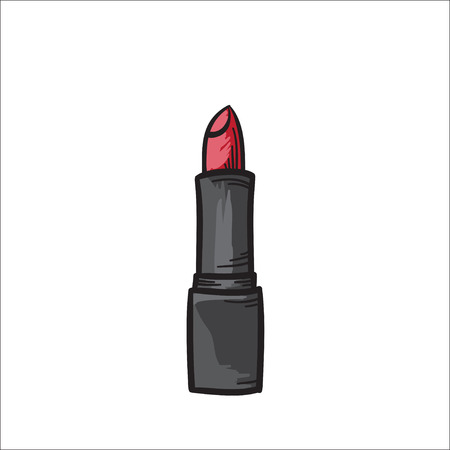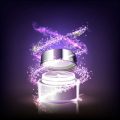1. The Basics of pH Balance in Skincare
When it comes to skincare, especially K-beauty, one term that often pops up is “pH balance.” But what exactly does that mean, and why should you care? In simple terms, pH stands for “potential hydrogen” and measures how acidic or alkaline a substance is on a scale from 0 to 14. A lower number means more acidic, while a higher number means more alkaline.
Why pH Matters in Skincare
Your skin has a natural protective layer called the acid mantle, which helps keep moisture in and harmful bacteria out. This layer functions best when your skin’s pH stays slightly acidic—usually between 4.5 and 5.5. When skincare products are too alkaline or too acidic, they can disrupt this balance, leading to dryness, irritation, breakouts, or even long-term damage.
The Ideal pH Range for Healthy Skin
Most dermatologists agree that the sweet spot for healthy facial skin is a pH between 4.5 and 5.5. K-beauty toners are often formulated within this range because they aim to support—not strip—the skin’s natural barrier. Unfortunately, many American consumers assume that all toners should feel “tingly” or have an astringent effect, which usually means the product is too alkaline or alcohol-heavy.
Skin pH Scale at a Glance
| pH Level | Description | Effect on Skin |
|---|---|---|
| 0-3 | Highly Acidic | Irritating and damaging to skin barrier |
| 4-6 | Mildly Acidic (Ideal) | Supports healthy barrier and microbiome |
| 7 | Neutral | Can be drying over time |
| 8-14 | Alkaline | Disrupts barrier; leads to dryness and sensitivity |
K-Beauty vs. Traditional Western Toners
A big misconception in the U.S. is that toners should “cleanse” or remove oil with strong ingredients like alcohol or witch hazel. But Korean toners focus more on hydration and restoring pH balance after cleansing. This difference can confuse American users who expect instant results like tightness or squeaky-clean skin—which actually signals damage to the acid mantle.
Quick Tip:
If your skin feels tight after using a toner, it’s probably too alkaline for you. Look for toners labeled as “pH-balancing” or those with added hydrating ingredients like hyaluronic acid or panthenol.
2. What Makes K-Beauty Toners Unique?
When it comes to skincare, not all toners are created equal—especially when comparing Korean beauty (K-Beauty) toners to their Western counterparts. While many Americans think of toner as an alcohol-heavy step that tightens the skin or removes leftover dirt, K-Beauty takes a completely different approach. Heres what sets Korean toners apart and why understanding these differences matters for your skin’s health.
Hydration Comes First
One of the biggest misconceptions in the U.S. is that toners are meant to dry out oily skin or strip away any remaining impurities after cleansing. In contrast, K-Beauty toners are designed primarily to hydrate and prep the skin for the next steps in your routine. These formulas often include humectants like hyaluronic acid, glycerin, and botanical extracts that draw moisture into the skin rather than taking it away.
Lightweight, Layerable Texture
Korean toners typically have a watery or slightly viscous texture that absorbs quickly without feeling heavy. This makes them ideal for layering—sometimes even applied in multiple layers (a technique known as the “7-skin method”) to build hydration gradually without overwhelming the skin.
Focus on pH Balance
Another key feature of K-Beauty toners is their emphasis on pH balance. Healthy skin has a natural pH around 4.5 to 5.5, which supports its barrier function and keeps bacteria at bay. Harsh cleansers or high-pH products can disrupt this balance, leading to dryness, irritation, or breakouts. Korean toners are formulated to restore and maintain this slightly acidic environment, setting your skin up for success with every step that follows.
Comparison: K-Beauty vs. Western Toners
| Feature | K-Beauty Toners | Western Toners |
|---|---|---|
| Main Function | Hydration & pH balancing | Cleansing & oil control |
| Texture | Lightweight, watery or slightly viscous | Often watery but sometimes harsh or drying |
| Ingredients | Humectants, soothing botanicals, minimal alcohol | Astringents, alcohol-based ingredients |
| Skin Impact | Nourishes and preps skin without irritation | Can be drying or sensitizing over time |
| pH Level Focus | Formulated to support skin’s natural pH (4.5–5.5) | Often overlooked; may disrupt pH balance |
Why This Matters for American Skincare Users
If youre used to using toners that leave your face feeling tight or squeaky clean, switching to a K-Beauty toner might feel unusual at first—but your skin will thank you. By focusing on hydration and maintaining a healthy pH level, Korean toners help strengthen the skin barrier, reduce inflammation, and improve overall texture and glow over time.
The takeaway? Rethink what you expect from your toner. Instead of treating it as just another cleansing step, see it as your first layer of nourishment—and consider giving K-Beauty formulas a try.

3. Common Misconceptions Americans Have About Toners
In the U.S., many people still think of toners as those strong-smelling, alcohol-based liquids that sting your face and dry out your skin. For years, toners were marketed as acne-fighting astringents—something you’d only use if you had oily or problematic skin. This old-school view has caused a lot of confusion when it comes to modern skincare, especially when comparing traditional American products with Korean beauty (K-beauty) options.
How American Views Differ from K-Beauty Philosophy
K-beauty toners are all about hydration and balance. They’re designed to prep your skin after cleansing, helping restore its natural pH level so that the rest of your skincare products absorb better. In contrast, many Americans still expect toners to “strip” their skin clean, which can actually damage the skin barrier over time.
Key Differences in Toner Perception
| Aspect | Traditional American Toners | K-Beauty Toners |
|---|---|---|
| Main Purpose | Remove oil and fight acne | Hydrate and rebalance skin |
| Main Ingredients | Alcohol, witch hazel, salicylic acid | Botanical extracts, hyaluronic acid, fermented ingredients |
| Skin Feel After Use | Tight and dry | Soft and refreshed |
The Role of pH Balance
Another misconception is ignoring the importance of pH balance. Healthy skin has a slightly acidic pH (around 5.5), but many harsh cleansers and toners in the U.S. have a high pH that can throw off this balance. K-beauty toners usually have a low pH to help maintain healthy skin function without causing irritation or dryness.
Tip:
If your toner leaves your face feeling tight or squeaky clean, it might be too harsh. Try switching to a hydrating toner with a low pH for better long-term skin health.
4. How Misunderstanding pH Skews Product Expectations
In the world of K-Beauty, toners are not just an afterthought or a basic cleansing step — they’re essential for resetting your skin’s pH balance and prepping it for the rest of your routine. However, many American consumers often misunderstand what pH balance really means, and this confusion leads to misaligned skincare goals and poor product choices.
What pH Balance Really Means
pH stands for “potential hydrogen” and measures how acidic or alkaline a substance is on a scale from 0 to 14. The ideal pH level for healthy skin is slightly acidic, around 4.5 to 5.5. When your skin’s pH is balanced, it can better retain moisture, fight off bacteria, and stay resilient against environmental stressors.
Common Misconceptions About Toners in the U.S.
Many Americans still associate toners with the old-school, alcohol-heavy formulas designed to strip oil from acne-prone skin. This outdated perception leads consumers to choose harsh toners that disrupt the skin barrier rather than support it.
| Misconception | Reality |
|---|---|
| Toners should make your face feel squeaky clean | A tight feeling usually means your skin barrier has been compromised |
| All toners are meant to dry out oily skin | K-Beauty toners hydrate and rebalance the skin instead of stripping it |
| Higher price means better performance | The effectiveness of a toner depends more on ingredients and pH compatibility than price |
How Misunderstood pH Leads to Poor Choices
Without understanding how pH affects their skin, many people end up choosing products that clash with their skin’s natural acidity. For instance, using a toner with a high (alkaline) pH can throw off the balance, making skin more prone to breakouts, dryness, or irritation.
Why It Matters:
- If your toner is too alkaline (above 7), it can weaken your acid mantle — the protective barrier that keeps moisture in and bacteria out.
- If its too acidic (below 3), it may irritate sensitive skin or cause redness and stinging.
K-Beauty brands typically formulate toners with a skin-friendly pH range (around 5), which helps calm inflammation and prepare the skin for serums and moisturizers. Without this knowledge, American consumers might overlook these gentle yet effective options in favor of harsher alternatives.
5. How to Choose the Right Toner Based on pH
When it comes to skincare, especially K-beauty toners, one thing many American consumers often overlook is the importance of pH balance. Your skins natural pH hovers around 4.5 to 5.5, which is slightly acidic. Using a toner with a pH too high or too low can disrupt your skin barrier and lead to dryness, irritation, or breakouts.
Understanding Product Labels
Most skincare products in the U.S. don’t clearly display their pH levels. This makes it tricky for consumers to know what they’re putting on their skin. However, many Korean toners are formulated with pH balance in mind and often indicate “pH balancing” or “skin balancing” on the label.
Look For These Key Terms:
- “pH balancing” or “low pH”
- “Skin barrier support”
- “Gentle” or “non-stripping”
Check for Ingredients That Support Healthy pH
Not all toners are created equal. Some contain ingredients that help maintain or restore the skin’s natural acidity, while others may contain harsh alcohols or fragrances that raise the pH level unnecessarily.
Ingredients to Look For:
- Centella Asiatica – soothes and supports skin barrier
- Panthenol (Vitamin B5) – hydrates and calms
- Lactic Acid – gently exfoliates while maintaining acidity
- Green Tea Extract – antioxidant and soothing properties
Ingredients to Avoid:
- Denatured Alcohol – drying and raises pH
- Fragrance/Parfum – irritating for sensitive skin
- Sodium Lauryl Sulfate – harsh cleanser that disrupts pH
Compare Toners by pH Level (If Available)
If the product lists its pH level—or if you find it from brand websites or reviews—it’s easier to make an informed choice. Heres a simple guide:
| Toner pH Level | Best For |
|---|---|
| 3.5–4.5 | Oily or acne-prone skin (helps control bacteria) |
| 4.5–5.5 | Normal to combination skin (most balanced) |
| Above 6.0 | Dry or mature skin (can be hydrating but watch for irritation) |
Tips for American Consumers
- If a product doesn’t list its pH, research the brand online—many K-beauty brands are transparent about this.
- Avoid toners that leave your face feeling tight; thats usually a sign of high pH or harsh ingredients.
- Korean toners labeled as “skin” or “first essence” are often designed to restore pH after cleansing—great choices for those new to K-beauty.
Selecting the right toner isn’t just about hydration—it’s about supporting your skin’s natural protective layer through smart ingredient choices and proper pH alignment.

